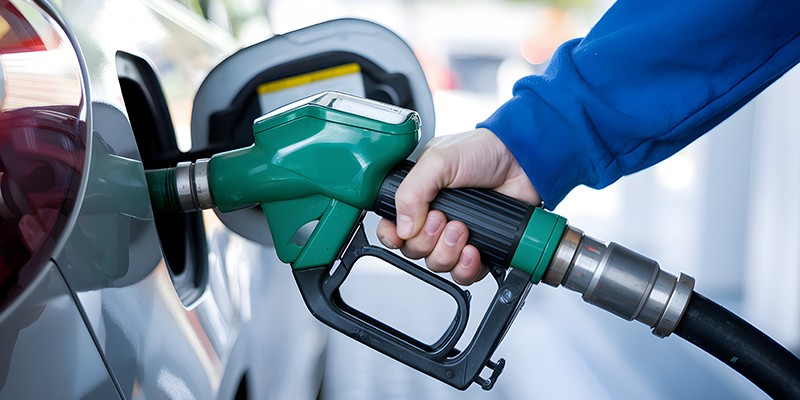Super Unleaded Petrol vs Unleaded Petrol
Super Unleaded Petrol vs Unleaded Petrol

What is the difference, and which should you be using?
If you own and have been driving a petrol car, you have likely noticed the different fuel options available, including the classic unleaded 95 we all know, along with the addition of super unleaded 97 and 99, with the bold claims to enhance performance. But what do those numbers actually mean, both for your car and your bank balance? Let’s dive into what differences there are between unleaded and super unleaded.
What is Unleaded Petrol?
As the name suggests, unleaded petrol is fuel without lead, a toxic additive that was fortunately phased out at the start of the 1980s. Today, the standard unleaded petrol is available everywhere, and at every pump. It is commonly referred to as E10, this designation states that it contains 10% ethanol. The purpose of the ethanol is to reduce the harmful emission given out by the petrol engine.
The performance of unleaded petrol is measured by its octane rating, which typically falls between 91 and 95 RON (Research Octane Number). A higher octane rating means the fuel is better at preventing “knocking,” a phenomenon where fuel burns unevenly in the engine. Most modern engines are designed to run optimally on 95 RON, but many can also function with lower octane ratings.
What is Super Unleaded Petrol?
Super unleaded petrol is considered the premium petrol compared to standard unleaded. It usually boasts an octane rating of 97 to 99 RON, making it suitable for high-performance engines that require more efficient combustion and fuel compression. Super unleaded is also often recommended for older cars that may not be compatible with E10. You might see it branded with various names like Premium, Ultimate, or Supreme, but the key feature is its higher octane rating, which reduces the risk of knocking.
Super unleaded typically contains less ethanol (around 5% compared to E10), making it a better option for older cars that might struggle with the higher ethanol content in standard unleaded. Additionally, many super unleaded fuels include performance-enhancing additives such as detergents, anti-corrosion agents, and friction modifiers, which can help improve an engine’s longevity and efficiency over time.
Can You Switch Between Standard Unleaded and Super Unleaded?
Yes, you can mix and match. Most vehicles built in the last two decades can run on either type of fuel without any issues. However, if your car's manual specifies a particular octane rating, it's best to follow that recommendation for optimal performance.
Benefits of Super Unleaded
The primary beneficiaries of super unleaded fuel are high-performance cars. If you drive a vehicle designed to maximise power output, using super unleaded can allow you to unlock its full potential. You may experience a slight increase in fuel efficiency and performance.
For regular cars, the advantages may be less noticeable. While some drivers report improved performance with super unleaded, it’s often marginal. If you drive a typical small or medium-sized car, standard unleaded will usually suffice.
Is Super Unleaded Worth the Extra Cost?
This largely depends on your vehicle and driving habits. Assuming super unleaded costs an additional 10p per litre, filling up a 55-litre tank will set you back an extra £5.50. If you fill up every two weeks, that’s approximately an additional £140 annually.
For high-performance cars, the extra cost is generally justified. These engines benefit from the higher octane fuel and its additives. If you frequently take long drives, the improved efficiency may also make super unleaded worth considering.
Conversely, if you drive a more modest vehicle, the benefits might not be significant enough to warrant the higher price tag. If you’re looking for the cleaning benefits of super unleaded’s additives, you might consider purchasing fuel additives separately to maintain your engine’s health.
Which Type of Petrol is Greener?
When it comes to environmental impact, standard unleaded has the edge due to its E10 rating. The higher ethanol content helps reduce its carbon emissions. However, the additives in super unleaded may enhance fuel efficiency, which can also lead to lower emissions.
So, Which Fuel Should You Use?
To determine whether unleaded or super unleaded is right for you, start by checking your car’s manual. It will usually specify an octane rating for optimal performance. If you own a vehicle older than 20 years, ensure it's compatible with E10, as some are not and may require super unleaded.
Ultimately, both petrol types will face increasing competition from electric vehicles (EVs) as the automotive landscape changes and shifts towards electrification. As we approach the 2035 ban on the sale of new petrol and diesel vehicles in the UK, the relevance and price of these fuels may change, but for now, understanding their differences can help you make an informed choice at the pump.
